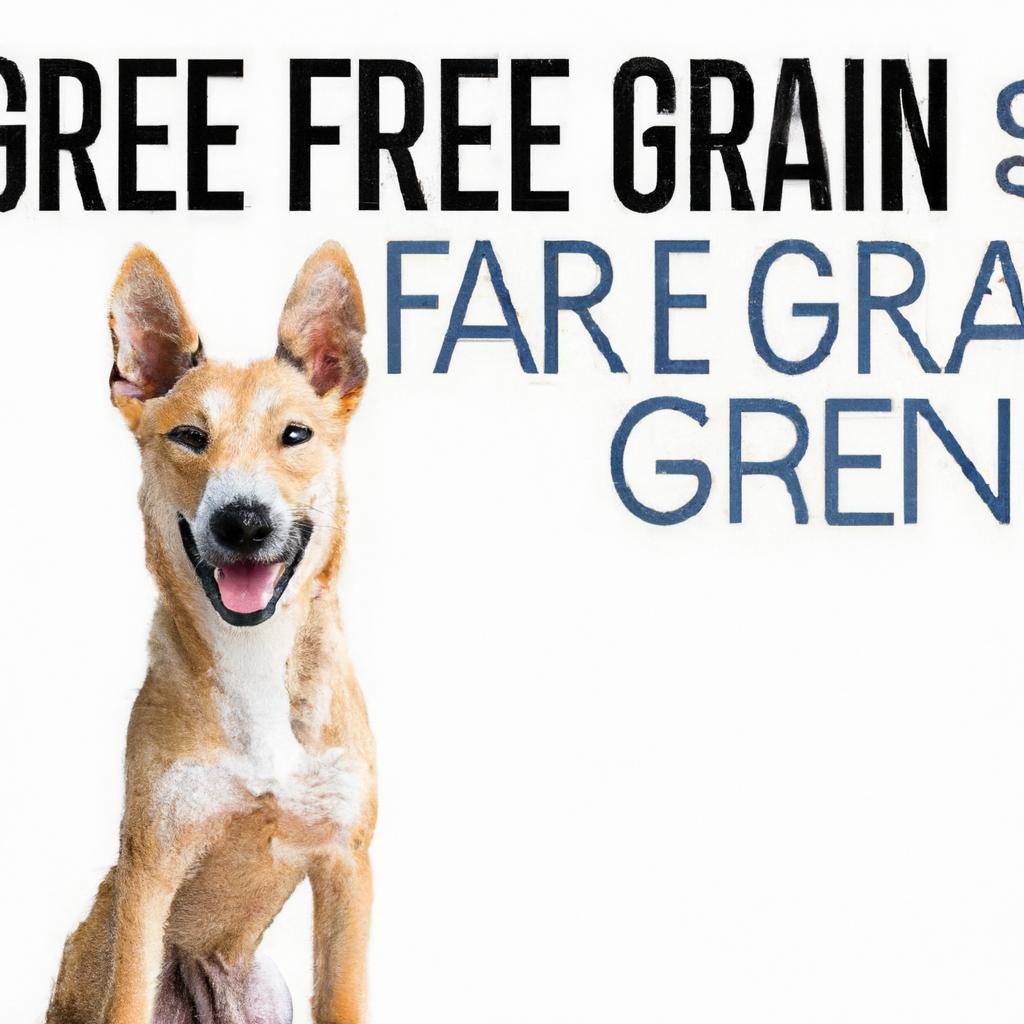When Sarah adopted Max, her energetic Labrador, she was advised to feed him a grain-free diet. For months, he thrived—his coat gleamed, and his energy was boundless. But as Max aged, he developed some digestive issues. After consulting her vet, Sarah learned that switching to a balanced grain-inclusive diet could improve his gut health and overall well-being. Hesitant but hopeful, she made the change. Within weeks, Max was happier and healthier than ever. Sometimes, embracing grains can be the key to unlocking your dog’s best life.
Contents
- Understanding the Nutritional Needs of Your Dog for Optimal Health
- Evaluating the Benefits of Grain-Based Diets for Canine Well-Being
- Transitioning Your Dog: Best Practices for Switching to Grain-Infused Meals
- Consulting with Veterinarians: Ensuring a Safe and Effective Dietary Change
- Q&A
Understanding the Nutritional Needs of Your Dog for Optimal Health
When considering a transition from a grain-free diet to one that includes grains, it’s essential to understand your dog’s unique nutritional requirements. Dogs, like humans, have specific dietary needs that can vary based on their age, breed, size, and activity level. Incorporating grains can provide essential nutrients that may be lacking in a grain-free diet, such as:
- Fiber: Grains like brown rice and oats are excellent sources of dietary fiber, which aids in digestion and helps maintain a healthy weight.
- Vitamins and Minerals: Whole grains are rich in B vitamins, iron, and magnesium, all of which contribute to overall health and energy levels.
- Carbohydrates: Grains serve as a valuable source of energy, particularly for active dogs that require more fuel for their daily activities.
Transitioning your dog to a grain-inclusive diet should be approached with care. It’s crucial to introduce grains gradually to avoid gastrointestinal upset. Start by mixing a small amount of the new grain-based food with their current diet, slowly increasing the proportion of the new food over a week or two. This gradual process allows your dog’s digestive system to adjust and helps you monitor any adverse reactions. Look for signs such as:
- Changes in stool consistency: A sudden change may indicate that your dog is not adjusting well.
- Allergic reactions: Watch for symptoms like itching, redness, or gastrointestinal distress.
Choosing the right grains is equally important. Not all grains are created equal, and some may be more beneficial than others. Opt for high-quality, whole grains that are easily digestible and free from additives. Some excellent options include:
- Brown rice: A gentle grain that is easy on the stomach and provides energy.
- Quinoa: A complete protein source that is rich in essential amino acids.
- Oats: A great source of soluble fiber that can help regulate blood sugar levels.
Ultimately, the decision to switch your dog’s diet should be based on their individual health needs and preferences. Consulting with a veterinarian or a pet nutritionist can provide valuable insights tailored to your dog’s specific situation. They can help you determine the best approach to ensure your furry friend receives a balanced diet that supports their overall well-being. Remember, a well-nourished dog is a happy and healthy dog!
Evaluating the Benefits of Grain-Based Diets for Canine Well-Being
When considering a transition from a grain-free diet to one that includes grains, it’s essential to recognize the potential advantages that grains can offer for your dog’s overall health. Grains such as brown rice, oats, and barley are not only digestible but also provide a rich source of essential nutrients. These ingredients can contribute to a balanced diet, ensuring your dog receives adequate energy and sustenance for their daily activities.
One of the primary benefits of incorporating grains into your dog’s diet is the **increased fiber content**. Fiber plays a crucial role in maintaining digestive health, promoting regular bowel movements, and preventing issues such as constipation. Additionally, a fiber-rich diet can help manage your dog’s weight by promoting a feeling of fullness, which can be particularly beneficial for dogs prone to obesity.
Moreover, grains can serve as a **valuable source of vitamins and minerals**. Many grains are fortified with essential nutrients like B vitamins, iron, and magnesium, which are vital for your dog’s metabolic processes and overall well-being. These nutrients support energy production, immune function, and even skin and coat health, contributing to a more vibrant and active lifestyle for your furry friend.
Lastly, switching to a grain-inclusive diet can also enhance the **palatability of your dog’s meals**. Many dogs find grain-based foods more appealing due to their texture and flavor, which can lead to improved appetite and satisfaction during mealtime. This can be particularly important for picky eaters or dogs recovering from illness, as a more enticing diet can encourage better eating habits and overall nutrition.
Transitioning Your Dog: Best Practices for Switching to Grain-Infused Meals
Transitioning your dog from a grain-free diet to one that includes grains can be a beneficial change, but it requires careful planning and consideration. Start by introducing the new grain-infused meals gradually. This method helps your dog’s digestive system adapt without causing gastrointestinal upset. Begin by mixing a small portion of the new food with their current grain-free diet, gradually increasing the ratio of the new food over a week or two.
When selecting a grain-infused meal, prioritize high-quality ingredients. Look for options that feature **whole grains** such as brown rice, oats, or barley, as these provide essential nutrients and fiber. Avoid products with fillers or artificial additives, as they can negate the health benefits you’re aiming for. Reading labels and understanding the nutritional content is crucial in ensuring your dog receives a balanced diet.
Monitor your dog’s reaction to the new diet closely. Keep an eye out for any signs of discomfort or allergies, such as itching, gastrointestinal issues, or changes in behavior. If you notice any adverse reactions, consult your veterinarian for guidance. They may recommend adjusting the transition process or suggest alternative grain options that may be more suitable for your dog’s specific needs.
Lastly, remember that every dog is unique, and their dietary needs can vary significantly. Regularly assess your dog’s overall health and energy levels during this transition. Incorporating **grain-infused meals** can lead to improved digestion, healthier skin, and a shinier coat, but it’s essential to ensure that the new diet aligns with your dog’s individual health requirements. By taking a thoughtful approach, you can make this transition smooth and beneficial for your furry friend.
Consulting with Veterinarians: Ensuring a Safe and Effective Dietary Change
When considering a dietary change for your dog, consulting with a veterinarian is an essential step to ensure the transition is both safe and effective. Veterinarians possess the expertise to assess your dog’s individual health needs, dietary requirements, and any potential allergies or sensitivities. They can provide tailored advice based on your dog’s age, breed, weight, and overall health status, which is crucial when switching from a grain-free diet to one that includes grains.
During your consultation, it’s important to discuss the specific reasons for the dietary change. Whether you are addressing concerns about nutrient deficiencies, digestive issues, or simply seeking a more balanced diet, your veterinarian can guide you in selecting the right grain-inclusive food. They may recommend specific brands or formulations that are known for their quality and nutritional value, ensuring your dog receives the best possible diet during this transition.
Additionally, your veterinarian can help you devise a gradual transition plan to minimize any digestive upset. A sudden change in diet can lead to gastrointestinal issues such as diarrhea or vomiting. By following a structured approach, which may include mixing the new grain-inclusive food with the current grain-free option over several days, you can help your dog adjust smoothly. This gradual process allows your dog’s digestive system to adapt, reducing the risk of adverse reactions.
regular follow-up appointments with your veterinarian after the dietary switch can be beneficial. Monitoring your dog’s health and behavior during this period will help identify any potential issues early on. Your vet can also make further recommendations based on your dog’s response to the new diet, ensuring that the change is not only safe but also enhances your dog’s overall well-being. Remember, a well-informed decision backed by professional guidance is key to a successful dietary transition.
Q&A
-
Is it safe to switch my dog from grain-free to grain-inclusive food?
Yes, it is generally safe to switch your dog from grain-free to grain-inclusive food. Many dogs can adapt to dietary changes without any issues. However, it’s essential to do so gradually to avoid gastrointestinal upset.
-
How should I transition my dog to a grain-inclusive diet?
To transition your dog, mix a small amount of the new grain-inclusive food with their current food. Gradually increase the proportion of the new food over 7-10 days. This slow transition helps your dog’s digestive system adjust smoothly.
-
Will my dog experience any health benefits from switching to grain-inclusive food?
Many dogs can benefit from a grain-inclusive diet, as it often provides essential nutrients and fiber that support digestive health. Additionally, some dogs may experience improved energy levels and overall well-being.
-
What should I look for in a quality grain-inclusive dog food?
When choosing a grain-inclusive dog food, consider the following:
- High-quality protein sources: Look for named meat or fish as the first ingredient.
- Whole grains: Opt for foods that include whole grains like brown rice, oats, or barley.
- Balanced nutrition: Ensure the food meets AAFCO standards for complete and balanced nutrition.
- No artificial additives: Choose brands that avoid artificial colors, flavors, and preservatives.
transitioning your dog from grain-free to grain-inclusive food can enhance their overall health and well-being. Consult your veterinarian to ensure a smooth switch, and watch your furry friend thrive on a balanced diet. Your dog’s health is worth it!

大家好,我是彼得潘,專業的手法身體治療師。我喜歡探索和研究各種主題,並透過與人工智慧的合作分享專業、實用、有趣的文章。我們定期進行人工審核,以確保內容的準確性。如果您發現文章中有任何不準確的地方,請隨時與我們聯繫,我們會及時糾正。您可以透過 [email protected] 與我們聯繫。



